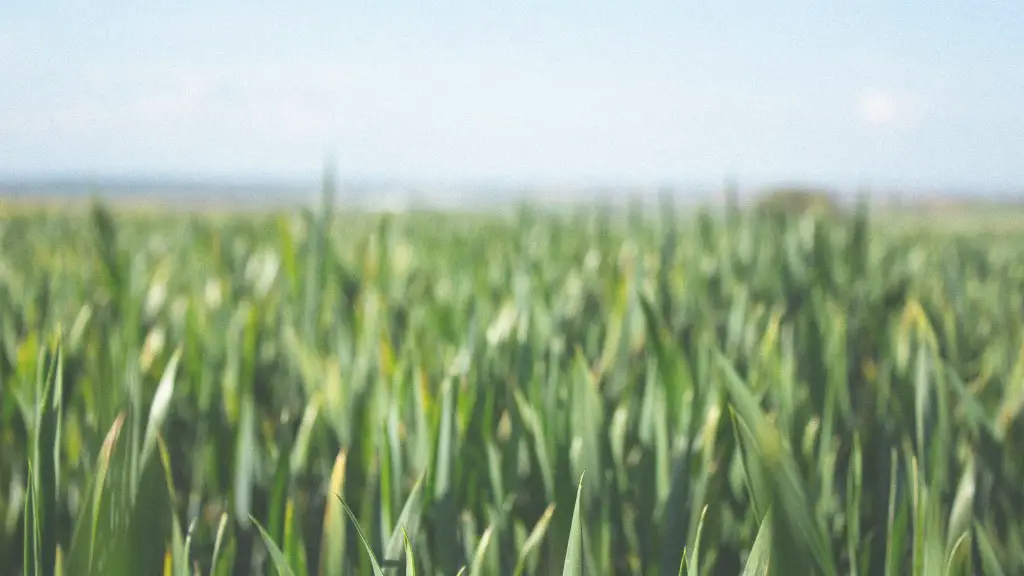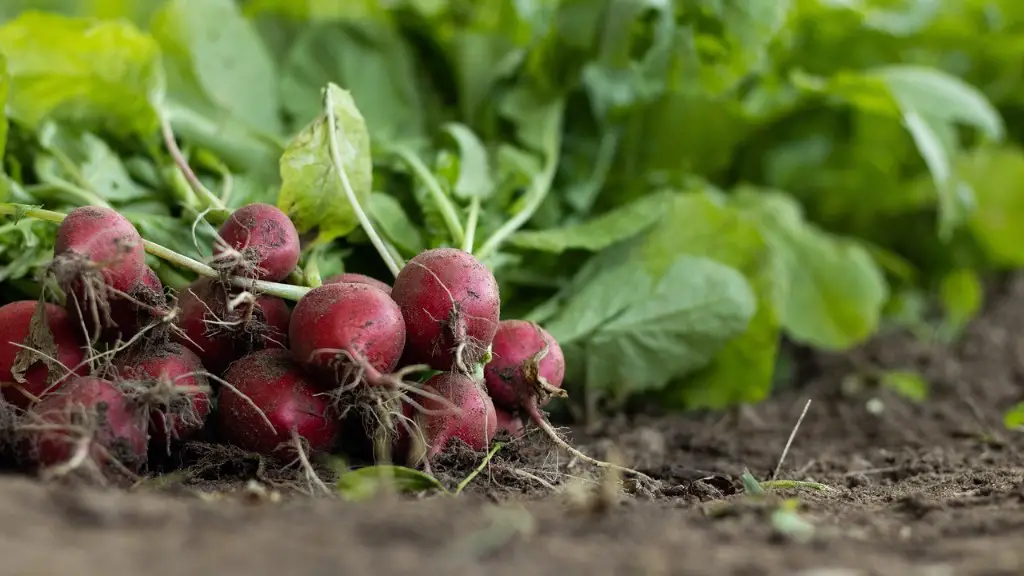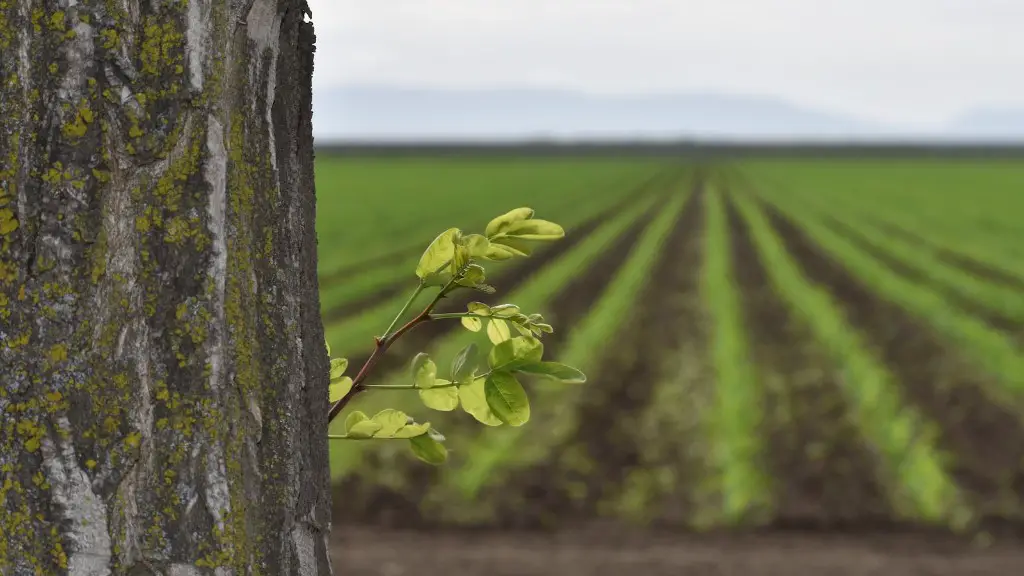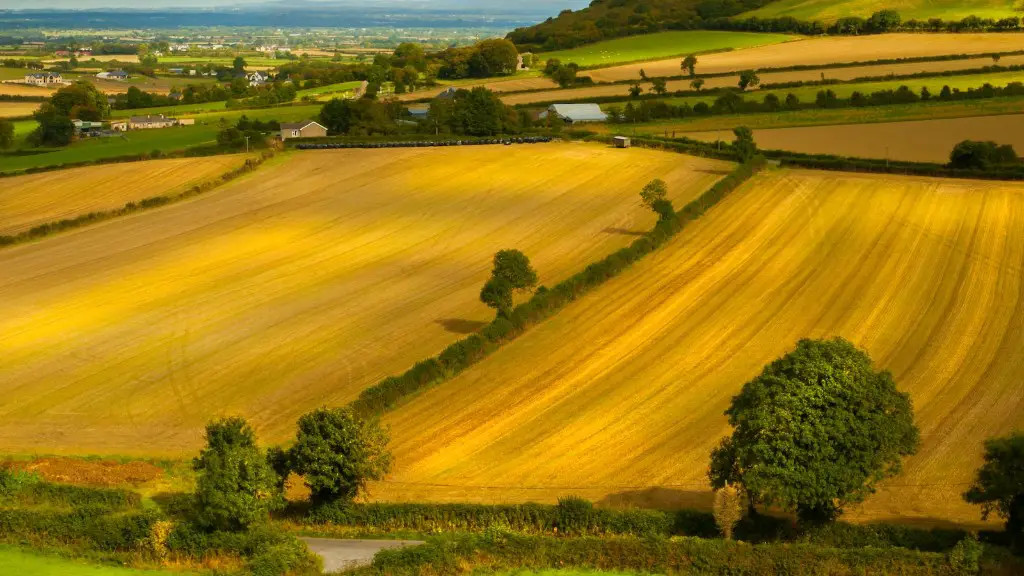Agriculture is a form of land use in which natural vegetation is altered and crops are grown for human consumption. It includes activities such as ploughing, planting, harvesting, and grazing. Agriculture originated in different parts of the world at different times. The first evidence of agriculture dates back to 10,000 BC in the Fertile Crescent, where early farmers cultivated wheat and barley.
The origins of agriculture can be traced back to several regions of the world, including the Middle East, Southeast Asia, and Mesoamerica. Agriculture first developed independently in different regions, but it eventually spread to other parts of the world through trade and migration.
Where did agriculture originate?
It is thought that agriculture originated in a few small hubs around the world, but probably first in the Fertile Crescent, a region of the Near East including parts of modern-day Iraq, Syria, Lebanon, Israel and Jordan. The Fertile Crescent is thought to be where crops were first domesticated, and it is thought that early farmers in this region learned to cultivate wheat, barley, peas, lentils, and flax.
The Zagros Mountain range, which lies at the border between Iran and Iraq, was home to some of the world’s earliest farmers. Sometime around 12,000 years ago, our hunter-gatherer ancestors began trying their hand at farming. They quickly learned that the mountain range was an ideal place to grow crops, and the region soon became one of the world’s major agricultural centers. Today, the Zagros Mountains are still home to many farmers, and the region’s agriculture is an important part of the Iranian and Iraqi economies.
Who first invented agriculture
The ancient Egyptians were among the first people to practice agriculture on a large scale. They started doing this in the pre-dynastic period, from the end of the Paleolithic period to the Neolithic period. This was made possible by the development of basin irrigation.
Agriculture plays a vital role in the world today. It is responsible for the majority of the food supply and is thought to have been practiced for thousands of years. It is a crucial part of the global economy and is vital to the survival of many people and cultures.
Where did agriculture begin in America?
Agriculture is thought to have arisen independently in at least three different regions of the world: South America, Mesoamerica, and eastern North America. Each region had its own unique plants and animals that were domesticated, and its own unique methods of cultivation.
The development of agriculture in the Americas is an interesting contrast to the development of agriculture in the old world. In the Americas, agriculture began independently and much earlier than in the old world. This is likely due to the fact that the Americas were populated by humans much earlier than the old world. The early development of agriculture in the Americas is a testament to the ingenuity and resourcefulness of the people who inhabited this land.
What was the first agriculture?
Agriculture was invented by humans during the Neolithic era, also known as the New Stone Age. This was a time period between 7,000 and 10,000 years ago. There were eight Neolithic crops: emmer wheat, einkorn wheat, peas, lentils, bitter vetch, hulled barley, chickpeas, and flax. The development of metal tools marked the end of the Neolithic era.
There are a few theories as to why early humans began to domesticate plants. One theory is that they started protecting the plants from birds and animals so that they could grow and the seeds could ripen. In this way, people became farmers. Another theory is that early humans began to domesticate plants for food. They may have started growing plants that were easier to harvest and eat, such as fruits and vegetables.
Which age did agriculture start
The first agriculture developed at the end of the Ice Age, about 11,700 years ago. This was a time when the climate was changing and the ice was melting. The ice melting created new opportunities for plant and animal life. Agriculture allowed people to take advantage of these new opportunities and to start to domesticated plants and animals.
The new study shows that the first farmers actually represented a mixture of Ice Age hunter-gatherer groups, spread from the Near East all the way to south-eastern Europe. This means that the genetic origins of the first agriculturalists are much more diverse than previously thought.
The study was conducted by analyzing the DNA of over 5,000 ancient individuals from across Europe and the Near East. The results showed that the first farmers were a mix of different groups, including people from the Near East, Anatolia, the Caucasus, and even the Pontic-Caspian steppe.
This study provides new insights into the origins of agriculture and the spread of farming across Europe. It shows that the first farmers were a diverse group of people, coming from different parts of the world. This diversity may have been one of the key factors that allowed agriculture to spread so quickly and successfully across Europe.
How did agriculture evolve?
The introduction of agriculture led to an increase in the variety of food that was produced. This was made possible by the introduction of irrigation, which allowed for more productive farmland. Additionally, animal rearing began to be practiced, which provided another source of food. Crop rotation also began to be practiced, which allowed for the production of more than one batch of each crop.
Norman Ernest Borlaug was an American agricultural scientist and humanitarian. He is considered by some to be the “father of modern agriculture” and the father of the green revolution. He won the 1970 Nobel Peace Prize for his life’s work.
What did humans before agriculture
Hunter-gatherers were constantly on the move, following the herds of animals they hunted or the ripening of wild fruits and vegetables. This way of life began to change about 10,000 years ago with the development of agriculture. Agriculture allowed people to settle in one place and cultivate crops or raise animals on nearby land. This led to the development of civilizations, which brought about advances in art, science, and technology.
It’s long been believed that our ancestors took up farming because it was a more efficient way to get food. But new research suggests that there may have been another factor at play: climate change.
Did farming start civilization?
Agriculture is one of the most important inventions of human beings. It has enabled people to grow all the food they need in one place, with a much smaller group of people. This has led to massive population growth, creating cities and trade. Agriculture has had a profound impact on the development of human civilization.
The history of wheat cultivation dates back thousands of years to the regions of the Fertile Crescent in the Middle East. Wheat was the first cereal to be cultivated by man, and in many places in the Middle East it was being sowed, tended and reaped soon after 8000 BC. The people of Jericho were the first known to have lived mainly from the cultivation of crops, and by the following millennium, barley was also being grown in the region. Wheat cultivation eventually spread to other parts of the world, and today it is a staple food in many countries.
What is the oldest crop
Lentils may be small, but they have played a big role in human history. For over 13,000 years, lentils have been a staple food in many cultures. Today, we still enjoy them in soups, stews, and salads. But in ancient times, lentils were even more important. They were a key food source that helped establish modern societies.
Lentils are a type of legume that is easy to grow and store. This made them an important food during times of scarcity. They are also a good source of protein, which was essential for early cultures that relied on hunting and gathering. Lentils helped these cultures thrive and develop into the societies we know today.
So next time you enjoy a bowl of lentil soup, remember the important role these little legumes have played in human history!
Paul Harvey’s “So God Made a Farmer” speech is an ode to the hard-working men and women who make our country run. The speech was made famous by a Dodge Ram Super Bowl advertisement, but it was originally given by Harvey at a Future Farmers of America convention in 1978. Harvey’s words ring just as true today as they did then, and the ad is a reminder of the important role farmers play in our society.
Warp Up
Theories about the origins of agriculture vary, but archaeologists have found evidence that it emerged independently in different parts of the world. One theory suggests that early humans began domesticating plants and animals to provide themselves with food during times of scarcity. Another theory suggests that early humans began imitating the behavior of other animals, such as birds, that were already engaged in agriculture.
The actual origins of agriculture are still unknown, but there are many theories. One theory suggests that agriculture originated independently in different parts of the world. Another theory suggests that agriculture was first developed in the Fertile Crescent of the Middle East and then spread to other parts of the world. No matter where it first began, agriculture has played a key role in the development of human civilization.




